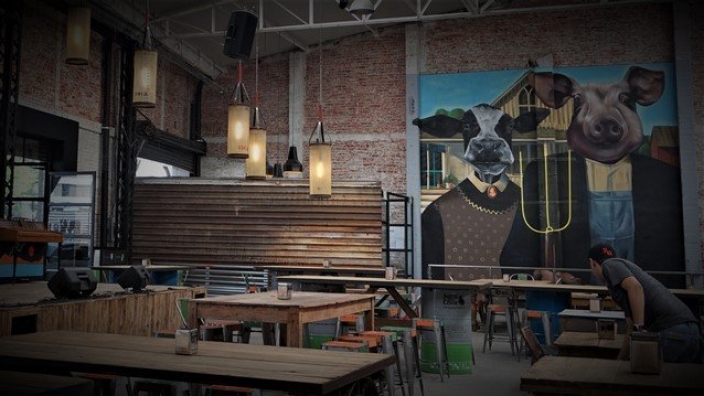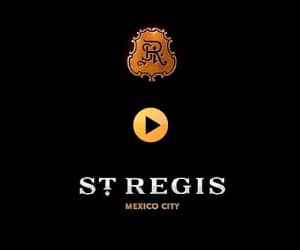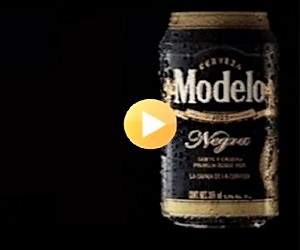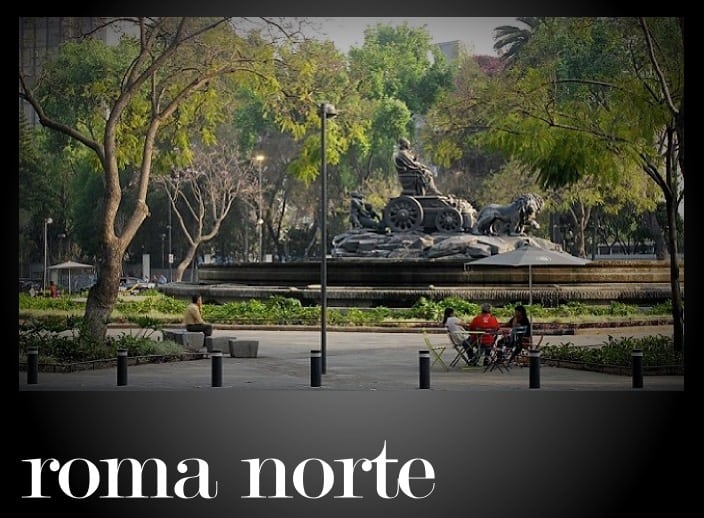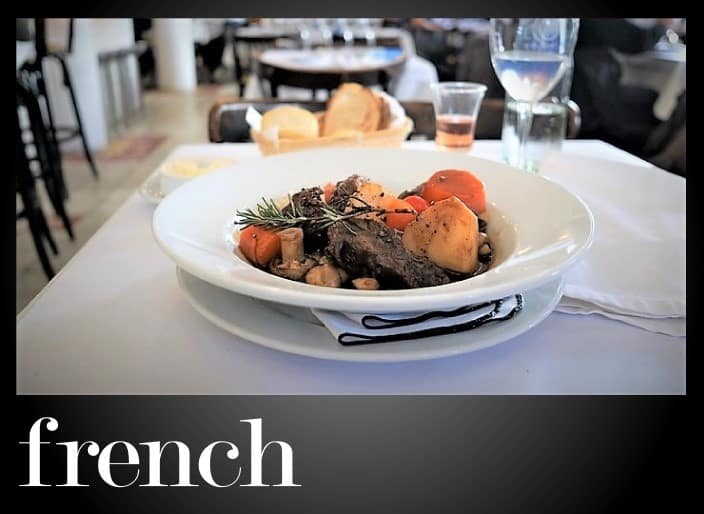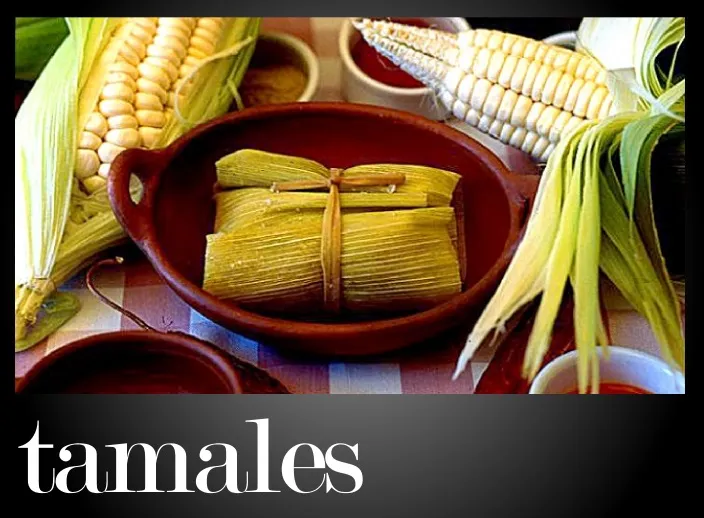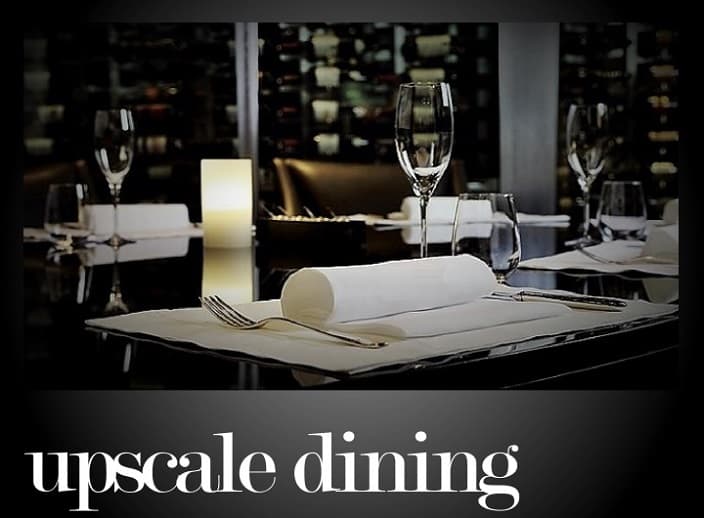Pinche Gringo
In a Nutshell
Pinche Gringo has brought the classic Texas-style barbecue to Mexico City. Delicious smoked brisket, ribs and sausage in an attractively decorated dining area.
Read the full review
Pinche Gringo is but another of several restaurants in Mexico City offering a style of food most often associated with Texas but which is also found in other parts of the USA, primarily Memphis and Kansas City. Less expensive cuts of beef and pork, such a pork shoulder, belly and ribs, and beef cuts such as brisket and ribs, which are otherwise almost inedible without being braised for extended periods, are rendered extraordinarily tender and delicious by cooking for extended periods of up to 15 hours with no direct heat, only hot smoke generated, customarily, by burning firewood in an adjoining firebox.
The cooks that have mastered the art of this special style of cooking, called pit masters, spend hours preparing the cuts of meat, often marinating, covering the exterior with a “dry-rub” of spices, then carefully monitoring the smoking of the meat to assure that the temperature remains low and constant. The cuts of meat may or may not be basted with special “barbecue sauces” during the duration of the cooking process.
This labor-intensive process results in an extraordinarily flavorful and tender cut of meat. What started as a nearly inedible and tough slab of meat becomes an extraordinarily tender portion that is so tender that it literally falls apart.
We previously reviewed two other restaurants in Mexico City serving this style of meat, Fork Off in La Condesa, and Porco Rosso, with multiple locations in Mexico City. But both of those restaurants use industrial-style smokers (large stainless-steel ovens) that burn small wood pellets to create the smoke used in the cooking process, that is circulated in the smokers with fans.
But Pinche Gringo, does it the traditional way. They use traditional smokers that have large smoking chambers, with an adjoining firebox where fire is generated and then redirected into the smoking chamber with fans. Pinche Gringo’s original location was in Coyoacán, but they have recently opened a new location in Anahuác – Nuevo Polanco. This new location is in a huge warehouse that has been converted. It is attractively decorated in a style reminiscent of a Texas barbecue joint (only with some fancy murals and neon artwork you wouldn’t likely see at Mueller’s in Texas).
They smoke and sell brisket, beef ribs, pork rib and sausage by the pound or they sell sandwiches made with any of these smoked meats. Side dishes include the Texas barbecue joint mainstays, potato salad and cole slaw, plus a few other popular American dishes, like macaroni and cheese.
They utilize about half a dozen large custom-made smokers located in a room adjoining the large dining room, and there is a large glass window separating the two rooms allowing patrons to watch the pit masters going about their chores, loading the cuts of meat into and removing them from the smokers.
I was given a tour of the smoking area by the manager. I noticed that the cuts of meat being loaded into the smoker were wrapped in aluminum foil. This is not customary. I didn’t ask but suspect that the foil is removed at some point during the extended smoking process so that the meat cuts can get the full dose of smoke circulating around in the chamber.
Whether the industrial smokers utilized by Porco Rosso and Fork Off produce an inferior product to a product smoked in a traditional two-chamber smoker is subject to debate. My perception based on the meats I tasted was that the smoked meats at Fork Off, using the industrial smokers, had a more intense smoky flavor than what I tasted at Pinche Gringo. However, the “bark” (a word used by pit masters to describe the slightly brittle crust that forms on the exterior of the meat cut during the smoking process) was superior and more flavorful at Pinche Gringo, and lent a superior contrast of texture.
However, on the day I sampled a bit of each type of smoked meat they offer, I felt the brisket was slightly overcooked, rendering it a bit less juicy than I would have preferred.
Both types of ribs I sampled were cooked perfectly, as was the delicious sausage.
Truth be told, I found no significant difference in the food, the ambiance or the service at any of these barbecue joints. They all garnered high marks in every category.
Your decision of where to go eat Texas-style barbecue will more likely be determined by which restaurant is closest to where you happen to be when you get that barbecue urge.
Out in Coyacán or on the eastern edge of Polanco, Pinche Gringo is likely your best option.
We note that Fork Off and Porco Rosso have table-service. Pinche Gringo fits into our fast-casual dining style. You order at the counter, pay in advance, and then wait for your order to be delivered at the end of the counter. All three restaurants were similarly priced for meat plates, sandwiches and sides.
Kudos to Pinche Gringo, and all the restaurateurs in Mexico City that are bringing this unique and delicious form of cuisine and restaurant-style to Mexico’s big capital city.

